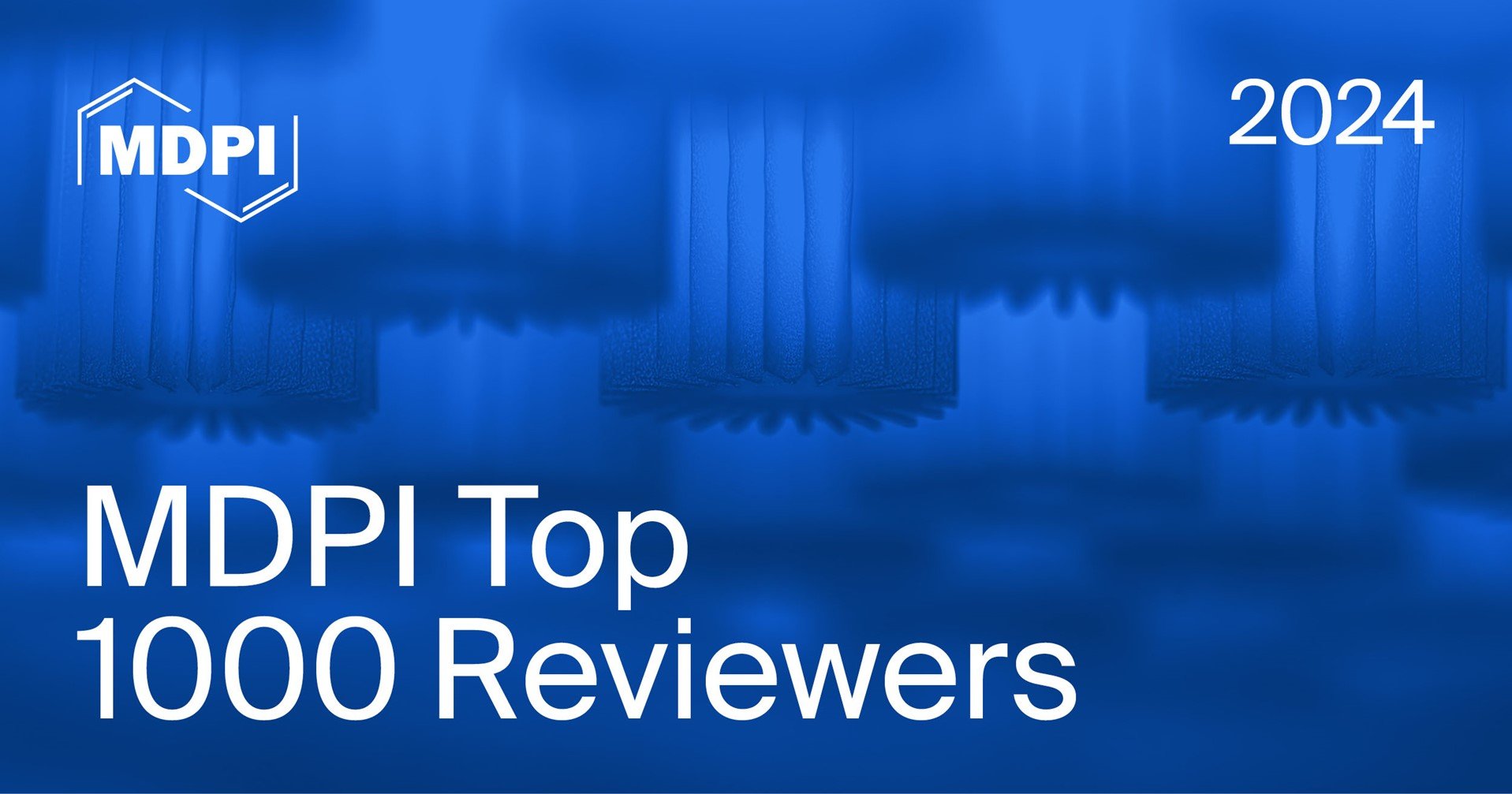Journal Description
Environments
Environments
is an international, peer-reviewed, open access journal on environmental sciences published monthly online by MDPI.
- Open Access— free for readers, with article processing charges (APC) paid by authors or their institutions.
- High Visibility: indexed within Scopus, ESCI (Web of Science), PubAg, AGRIS, GeoRef, and other databases.
- Journal Rank: JCR - Q2 (Environmental Sciences) / CiteScore - Q1 (Ecology, Evolution, Behavior and Systematics)
- Rapid Publication: manuscripts are peer-reviewed and a first decision is provided to authors approximately 19.2 days after submission; acceptance to publication is undertaken in 3.4 days (median values for papers published in this journal in the first half of 2025).
- Recognition of Reviewers: reviewers who provide timely, thorough peer-review reports receive vouchers entitling them to a discount on the APC of their next publication in any MDPI journal, in appreciation of the work done.
- Testimonials: See what our editors and authors say about Environments.
Impact Factor:
3.7 (2024);
5-Year Impact Factor:
3.7 (2024)
Latest Articles
Mixture Probability Distributions for Low-Flow Frequency Analysis in Mexico: Implications for Environmental Impact Assessment, Drought Management, and Regional Water Policy
Environments 2025, 12(12), 450; https://doi.org/10.3390/environments12120450 - 21 Nov 2025
Abstract
►
Show Figures
Reliable estimation of low-flow statistics is essential for water quality regulation, ecological protection, and drought management. This study evaluates traditional univariate and two-component Mixture Probability Distributions for modeling 7-day annual minimum flows (7Q) using records from 293 gauging stations across Mexico’s 37 hydrological
[...] Read more.
Reliable estimation of low-flow statistics is essential for water quality regulation, ecological protection, and drought management. This study evaluates traditional univariate and two-component Mixture Probability Distributions for modeling 7-day annual minimum flows (7Q) using records from 293 gauging stations across Mexico’s 37 hydrological planning regions, each with at least 20 years of data. Candidate models include Lognormal-3, Gamma-3, Gumbel, Weibull-3, and mixtures (Gumbel–Gumbel, Gumbel–Weibull-3, Weibull-3–Gumbel, Weibull-3–Weibull-3). Parameters are estimated by maximum likelihood, goodness-of-fit is assessed with Kolmogorov–Smirnov and Anderson–Darling tests. Sampling uncertainty is quantified via nonparametric bootstrap, providing 95% confidence intervals for design return levels, including 7Q10. Mixture models are selected as the best fit at 253 of 293 stations (86.3%), with Weibull-3–Weibull-3 dominating (45.1% of all stations) followed by Gumbel–Weibull-3 and Weibull-3–Gumbel; univariate models account for only 13.7% of cases, mainly Lognormal-3, and Gumbel alone is never preferred. Gumbel-only and symmetric G–G mixtures yield negative low-flow return levels at some sites and are therefore considered physically implausible. In contrast, mixtures containing Weibull-3 components ensure non-negative support, provide superior fit to the lower tail, and generally produce narrower bootstrap confidence intervals than the best univariate alternatives, indicating more stable and defensible 7Q10 estimates and providing an additional criterion to distinguish between models with similar goodness-of-fit statistics. These findings have direct implications for Environmental Impact Assessment, effluent permitting, ecological flow setting, drought planning, and regional water policy. The results support integrating Weibull-based mixtures—especially Weibull-3–Weibull-3 and Gumbel–Weibull-3—into Mexico’s national framework for low-flow frequency analysis and regulatory design.
Full article
Open AccessArticle
Who You Are Shapes What You Value: Perspectives on Nature’s Contributions in Mexican Coastal Lagoon Systems
by
Ana Itzel Casarrubias-Jaimez, Luz Piedad Romero-Duque, Sandra Quijas and Jenny Maritza Trilleras-Motha
Environments 2025, 12(12), 449; https://doi.org/10.3390/environments12120449 - 21 Nov 2025
Abstract
►▼
Show Figures
Coastal lagoons are critical socio-ecological systems that face increasing anthropogenic pressures, threatening their sustainability. Understanding how different social actors value Nature’s Contributions to People (NCPs) is essential for developing effective and legitimate governance approaches. This study examines how sociodemographic characteristics and social roles
[...] Read more.
Coastal lagoons are critical socio-ecological systems that face increasing anthropogenic pressures, threatening their sustainability. Understanding how different social actors value Nature’s Contributions to People (NCPs) is essential for developing effective and legitimate governance approaches. This study examines how sociodemographic characteristics and social roles influence plural valuations of NCPs in the Tres Palos lagoon, Mexico. We collected data from different social actor types across three coastal communities, assessing perception values, orientation values, and change projections for eight NCPs, with a focus on pattern identification and hypothesis generation rather than causal inference. Multiple Correspondence Analysis revealed that social actor type (decision-makers and residents) emerged as the primary factor differentiating NCP valuations. Decision-makers consistently rated regulating contributions (habitat creation, climate regulation, and soil formation) as highly important and projected future declines attributed to external pressures. In contrast, residents assigned lower importance to these contributions and anticipated stability through community restoration efforts. Sex also influenced value orientations, with women displaying more egoistic (self-interest) orientations toward habitat creation and the regulation of freshwater and coastal water quality, while men expressed altruistic (interest in others) orientations toward physical and psychological experiences, as well as habitat creation. These valuation mismatches reflect fundamentally different relationships with lagoon ecosystems: institutional regulatory perspectives versus experiential subsistence viewpoints. The divergent responsibility attributions and future projections create governance challenges that traditional top-down approaches cannot adequately address. Our findings underscore the need for reflexive governance frameworks that recognize value pluralism and foster inclusive spaces for dialogue among diverse knowledge systems. This research contributes to the growing literature on plural valuation while providing practical insights for coastal ecosystem management in the context of the Global South.
Full article

Figure 1
Open AccessArticle
Predicting Minute Ventilation from Heart Rate in Adolescents: A Tool for Environmental Health Studies
by
Celia Cacho, Meghana Giri, Kyung Hwa Jung, Ruskin Del Mundo, Aimee Layton and Stephanie Lovinsky-Desir
Environments 2025, 12(12), 448; https://doi.org/10.3390/environments12120448 - 21 Nov 2025
Abstract
Minute ventilation (VE) is central to understanding the interplay between air pollution and exercise. However, real-time measurement of VE in environmental health research is often limited by access to equipment and technical expertise. We aimed to (1) develop predictive equations for VE based
[...] Read more.
Minute ventilation (VE) is central to understanding the interplay between air pollution and exercise. However, real-time measurement of VE in environmental health research is often limited by access to equipment and technical expertise. We aimed to (1) develop predictive equations for VE based on heart rate (HR) in adolescents using metabolic exercise testing data, (2) evaluate which demographic factors influenced model accuracy, and (3) compare our equations to previously published equations applied to our sample. We analyzed cardiopulmonary exercise test (CPET) data from 41 patients. VE was log-transformed, and generalized estimating equations (GEE) were used to model associations between HR and VE, adjusting for age, sex, race, ethnicity, and BMI. In the fully adjusted model, HR was a strong predictor of VE (p-value < 0.001); only sex was a significant covariate (p = 0.003). Stratification revealed a higher predicted VE at a given HR for males compared to females (ymale = 0.020x + 0.813 vs. yfemale = 0.019x + 0.708, where y = lnVE and x = HR) with a pseudo-R2 of 0.80 for males and pseudo-R2 of 0.82 for females. Our predictive equations had the lowest average percent difference between measured and predicted VE, whereas prior models under- or overestimated VE in our sample. Overall, sex-specific GEEs provide a practical method to estimate VE from HR in adolescents and can serve as tools to support exposure assessment and future applications in environmental health research.
Full article
(This article belongs to the Special Issue Ambient Air Pollution, Built Environment, and Public Health)
►▼
Show Figures
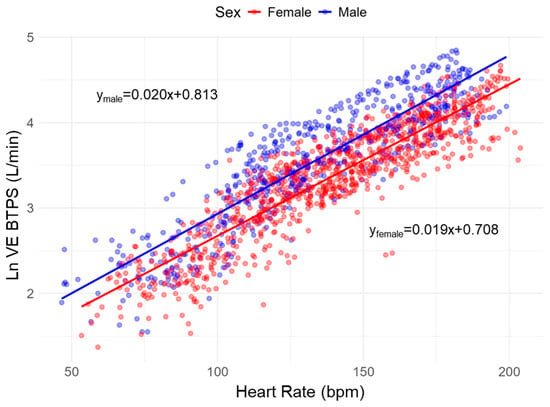
Figure 1
Open AccessArticle
Amendment of Contaminated Soils with Biochar and Peat: Effects on Metal Solubility and Uptake in Grass and Earthworms in a Field Trial
by
Charlotta Tiberg, Dan B. Kleja, Carin Sjöstedt, Mats Fröberg, Ingrid Rijk, A. Sigrun Dahlin, Maria Larsson, Alf Ekblad, Viktor Sjöberg and Anja Enell
Environments 2025, 12(11), 447; https://doi.org/10.3390/environments12110447 - 20 Nov 2025
Abstract
The effectiveness of biochar amendment for remediation purposes depends on many factors related to the biochar and the contaminated site. Therefore, each application must be evaluated site-specifically. To facilitate full-scale implementation, more information from field studies on biochar-amended contaminated sites, as well as
[...] Read more.
The effectiveness of biochar amendment for remediation purposes depends on many factors related to the biochar and the contaminated site. Therefore, each application must be evaluated site-specifically. To facilitate full-scale implementation, more information from field studies on biochar-amended contaminated sites, as well as cost-effective approaches to evaluate the remediation efficacy of specific biochar materials are needed. We studied the effects of biochar and peat on metal solubility and bioavailability in a contaminated soil in a fully factorial field trial. The biochar was produced from wood via gasification in a floating fixed-bed reactor at 750 °C. Soil solutions from field-installed lysimeters, grass (Lolium perenne L), and earthworms (Eisenia fetida) were analyzed. In addition, a standardized batch leaching test (ISO 21268-2:2019) was performed to evaluate its feasibility to mimic soil solution concentrations. The results showed that biochar generally reduced the solubility and uptake of cationic metals. In situ solubility of Cu and Hg was reduced more than 80%, and Zn up to 70%. Soil solution concentrations of Cr increased in biochar-amended soils, but this effect was reduced by peat. Peat had small effects on in situ solubility of other metals. For cations, the batch test showed the same trends as the soil solution, with biochar decreasing solubility. However, mobilization of colloids during shaking in the batch test induced artefacts, leading to an overestimation of the solubility of some metals, especially Pb and Hg, an effect that was enhanced by peat applications.
Full article
(This article belongs to the Special Issue Biochar as an Environmental Technology)
Open AccessReview
Urban Stormwater and Groundwater Quality: Pathways, Risks, and Green Infrastructure Solutions
by
Amir Motlagh
Environments 2025, 12(11), 446; https://doi.org/10.3390/environments12110446 - 20 Nov 2025
Abstract
►▼
Show Figures
The development of urban areas and the proliferation of impervious surfaces have significantly altered natural hydrological cycles, resulting in an increase in stormwater runoff and substantial risks to groundwater quality. This review synthesizes current research on the transport mechanisms of stormwater contaminants, including
[...] Read more.
The development of urban areas and the proliferation of impervious surfaces have significantly altered natural hydrological cycles, resulting in an increase in stormwater runoff and substantial risks to groundwater quality. This review synthesizes current research on the transport mechanisms of stormwater contaminants, including toxic elements, nutrients, pathogens, and emerging pollutants such as microplastics and pharmaceuticals, into aquifers. This study analyzes the physicochemical and biological processes that affect pollutant mobility and retention in urban soils, emphasizing the vulnerability of groundwater systems, particularly in areas with permeable soils and shallow water tables. The article evaluates a range of green infrastructure (GI) and low-impact development (LID) strategies—including rain gardens, bioswales, infiltration basins, constructed wetlands, and urban forestry—to assess how effectively they can mitigate stormwater pollution and improve groundwater protection. Case studies from North America illustrate the practical implementation and performance of GI systems, emphasizing the importance of site-specific design, monitoring, and adaptive management. The review also discusses global policy frameworks and community engagement strategies that support sustainable stormwater management. Ultimately, it advocates for an integrated, multidisciplinary approach that combines engineering, ecological science, and public policy to safeguard groundwater resources in the face of climate variability and urban expansion.
Full article
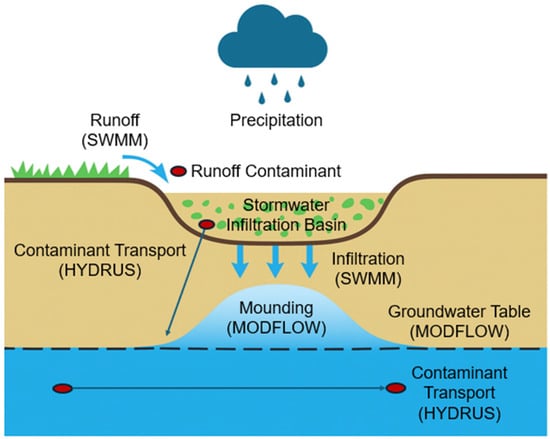
Figure 1
Open AccessArticle
Hard Evidence from Turtle Shells: Tracing Metal and Non-Metallic Elements Bioaccumulation in Freshwater Ecosystems
by
Haithem Aib, Badis Bakhouche, Krisztián Nyeste, Boglárka Döncző, Selmane Chabani, Amina Saadi, Zsolt Varga and Herta Mária Czédli
Environments 2025, 12(11), 445; https://doi.org/10.3390/environments12110445 - 18 Nov 2025
Abstract
►▼
Show Figures
The longevity, site fidelity, and trophic position of freshwater turtles have led to their increasing recognition as useful bioindicators of environmental contamination. Mauremys leprosa (n = 25) shells from a Northern African wetland system were examined for trace element concentrations in order
[...] Read more.
The longevity, site fidelity, and trophic position of freshwater turtles have led to their increasing recognition as useful bioindicators of environmental contamination. Mauremys leprosa (n = 25) shells from a Northern African wetland system were examined for trace element concentrations in order to assess shell composition as a non-invasive biomonitoring method. Micro x-ray fluorescence (μXRF) method was used to measure the shell concentrations of 17 elements, including Ca, P, Fe, Zn, Mn, Sr, Pb, Sb, and Al. As would be expected from the structural composition of bony tissues, calcium and phosphorus were the predominant constituents. In addition to bulk concentrations, micro-XRF elemental mapping revealed heterogeneous spatial distributions of essential and toxic elements within the shells, providing visual evidence of bioaccumulation patterns and supporting the use of shells as non-invasive bioindicators. There were statistically significant sex-related differences in the levels of trace elements, with males exhibiting higher concentrations of Mg, Mn, Sb, Pb, and Al (p < 0.05). Spearman correlations revealed strong associations between certain shell elements (e.g., Fe, Mn, Ti, Zn) and morphometric parameters. Comparisons with environmental samples (water and sediment) showed moderate to strong correlations, particularly with sediment metal concentrations, supporting the utility of shell chemistry as an integrative exposure matrix. Nonetheless, there were significant percentages of censored or missing values for certain metals (Cu, Ni, and As). This study emphasizes how viable turtle shells are as non-lethal markers of bioaccumulation and stresses how crucial it is to take environmental matrices, element-specific variability, and sex into account when assessing contamination. Longitudinal monitoring, physiological biomarkers, and isotopic analysis should all be used in future studies to bolster the causal relationships between environmental exposure and turtle health.
Full article
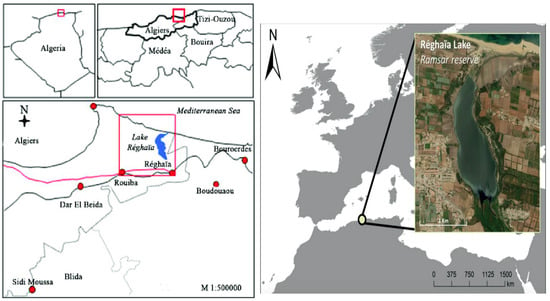
Figure 1
Open AccessArticle
Chemical Changes During Hydrothermal Carbonization of Manure Derived from Free-Range Bred Chickens and Its Potential as Organic Fertilizer for Tomato, Lettuce and Sunflower Plants
by
Francisco J. Moreno-Racero, Marta Velasco-Molina, Rafael López-Núñez, Judy A. Libra and Heike Knicker
Environments 2025, 12(11), 444; https://doi.org/10.3390/environments12110444 - 18 Nov 2025
Abstract
Hygienization by hydrothermal carbonization (HTC) of chicken manure (CM) at 250 °C allows its valorization as soil amendment or even organic fertilizer. To test if this hypothesis is also valid for feedstocks from free-range breeding, respective material of a small farm in southern
[...] Read more.
Hygienization by hydrothermal carbonization (HTC) of chicken manure (CM) at 250 °C allows its valorization as soil amendment or even organic fertilizer. To test if this hypothesis is also valid for feedstocks from free-range breeding, respective material of a small farm in southern Spain was comprehensively chemically characterized. The hydrochar of the manure collected from the ground of the farm was rich in mineral matter. After HTC, 68% of the organic carbon (C) was recovered, whereas 82% of the nitrogen (N) was lost most likely by volatilization and with the discarded process water. Despite this, 2.8% of the total N in the hydrochar was identified as inorganic N (Ni). Solid-state 13C and 15N NMR spectroscopy revealed aromatization of organic C and N, although alkyl C and amide N still contributed with 23% and 35% to the total organic C and N, respectively. The obtained distribution of N-forms indicated that enough Ni is plant-available for early plant growth, while the remaining N occurs in structures that can be slowly mobilized during advanced plant development. Low heavy metal concentrations suggest low phytotoxicity. Pot experiments with lettuce, sunflower, and tomato plants confirmed species- and dosage-dependent effects. A dosage of 3.25 t ha−1 improved lettuce and sunflower yields, whereas a dosage of 6.5 t ha−1 provided no additional growth benefits but caused phytotoxic reactions of the tomato plants. Our results support HTC as a strategy to valorize CM from free-range farms, although, due to the high variability of such materials, we recommend a thorough chemical characterization and phytotoxic tests before its application.
Full article
(This article belongs to the Special Issue Preparation and Application of Biochar (Second Edition))
►▼
Show Figures

Figure 1
Open AccessArticle
Livestock and Climate Change: How Do Livestock Practices Impact Greenhouse Gas Emissions in Holders Fields in Zamora Chinchipe?
by
Leticia Jiménez, Daniel Capa-Mora, Natacha Fierro, Jefferson Lasso, Junior Roa, Juan Bermeo, Juan Merino and Rubén Carrera
Environments 2025, 12(11), 443; https://doi.org/10.3390/environments12110443 - 17 Nov 2025
Abstract
►▼
Show Figures
Agricultural production in Zamora Chinchipe is primarily focused on dairy farming, an activity that constitutes a key component of land use in the region. Accordingly, the objectives of this study were as follows: (a) to estimate greenhouse gas (GHG) emissions from dairy farms
[...] Read more.
Agricultural production in Zamora Chinchipe is primarily focused on dairy farming, an activity that constitutes a key component of land use in the region. Accordingly, the objectives of this study were as follows: (a) to estimate greenhouse gas (GHG) emissions from dairy farms using the GLEAM model and (b) to evaluate the influence of altitude and livestock management practices on soil properties and the estimated GHG emissions associated with cattle production. This study encompassed 100 dairy farms, where the GLEAM methodology was applied to quantify emissions-related data. In addition, 300 soil samples (three per farm) were collected, and the perimeter of each farm, as well as the remaining forest areas, was mapped. The results indicate that although the farms generate CO2-equivalent emissions associated with livestock activities, the remaining forest areas contribute to mitigation by storing carbon in the soil. Altitude was found to positively influence soil quality, increasing organic matter and nitrogen content, whereas overgrazing negatively affected key soil properties and was associated with higher levels of GHG emissions. These findings underscore the need to implement sustainable management strategies that integrate agricultural production with the conservation of ecosystem services.
Full article
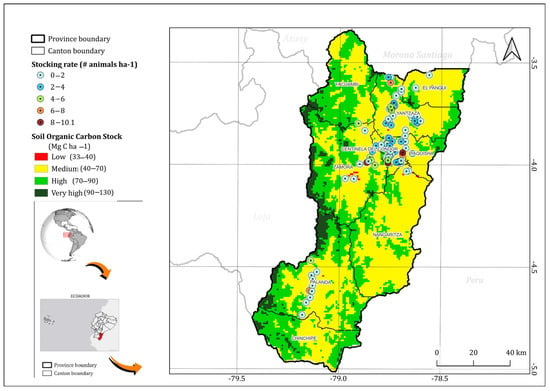
Figure 1
Open AccessArticle
Integrated Environmental Conditions Index (IECI) for Assessing Emerging/Legacy Pollutants and Environmental Integrity
by
Rubén Rafael Granados-Sánchez, Jacinto Elías Sedeño-Díaz and Eugenia López-López
Environments 2025, 12(11), 442; https://doi.org/10.3390/environments12110442 - 17 Nov 2025
Abstract
Current environmental pollution and degradation are problems of global concern. Environmental assessment indices are commonly applied for managing and diagnosing the health of ecosystems. However, most indices are specific to a type or group of pollutants or environmental characteristics. Therefore, this study focused
[...] Read more.
Current environmental pollution and degradation are problems of global concern. Environmental assessment indices are commonly applied for managing and diagnosing the health of ecosystems. However, most indices are specific to a type or group of pollutants or environmental characteristics. Therefore, this study focused on the development of a multi-metric index with the potential to integrate the environmental conditions assessed by specific indices. This index was named the Integrated Environmental Conditions Index (IECI). The IECI was applied to assess the environmental condition of rivers (Escanela, Jalpan, Ayutla, and Santa María) in the Sierra Gorda Biosphere Reserve in Mexico during two periods: the rainy and dry seasons. The study of surface water and sediment in riverbeds was addressed. We characterised ten study sites using both environmental indices and pollution indices associated with toxic metals/metalloids and microplastics. The IECI detected spatio-temporal changes. Seasonal variations in the environmental conditions were evident, as well as a reduction in environmental integrity in upstream sites, mainly due to the presence of microplastics and toxic metals/metalloids. The IECI proved effective in assessing environmental integrity and represents a valuable management tool for integrating environmental data and supporting informed decision-making.
Full article
(This article belongs to the Special Issue Potentially Toxic Elements in the Environment and Their Ecotoxicology)
►▼
Show Figures

Graphical abstract
Open AccessArticle
Bibliometric Analysis of Research on Nanoplastics (NPs): Uptake, Bioaccumulation, and Cellular Internalization in Scientific Literature
by
Rossana Romano, Adele Cocozza di Montanara, Roberto Sandulli and Palma Simoniello
Environments 2025, 12(11), 441; https://doi.org/10.3390/environments12110441 - 16 Nov 2025
Abstract
Nanoplastics, due to their small size and high surface reactivity, have emerged as critical pollutants with potential impacts on both environmental and biological systems. Their capacity for cellular internalization, bioaccumulation, and trophic transfer raises serious concerns for ecosystem and human health. The objective
[...] Read more.
Nanoplastics, due to their small size and high surface reactivity, have emerged as critical pollutants with potential impacts on both environmental and biological systems. Their capacity for cellular internalization, bioaccumulation, and trophic transfer raises serious concerns for ecosystem and human health. The objective of this study is to conduct a comprehensive bibliometric assessment of global research trends pertaining to biological endpoints such as the uptake, cell internalization, and bioaccumulation of nanoplastics. Using the Scopus database and VOSviewer software (version 1.6.20), 638 relevant scientific articles published between 2012 and 2024 were analyzed. The number of publications has grown significantly in recent years, particularly from 2020 onward, indicating increasing scientific attention. Co-authorship among authors and among countries analyses highlights the global and interdisciplinary nature of this field, with strong contributions from China, Europe, and the United States. Keyword co-occurrence analysis reveals a strong thematic focus on oxidative stress, genotoxicity, and the interaction of nanoplastics with heavy metals, suggesting emerging interest in combined toxicity effects. Citation analysis of journals confirms that leading publications in environmental science and toxicology have been central to the dissemination of key findings. The results emphasize a growing international commitment to understanding the behavior of nanoplastics in biological systems, particularly their accumulation and potential health risks. This analysis not only maps the evolution of research but also identifies gaps of knowledge and future directions, offering a foundation for guiding subsequent investigations and informing regulatory frameworks. The use of software tools such as VOSviewer (version 1.6.20) is essential for synthesizing large volumes of scientific data, reducing subjectivity, and, thus, providing visual insights into the structure and development of this research field.
Full article
(This article belongs to the Special Issue Environmental Risk Assessment of Aquatic Environments)
►▼
Show Figures
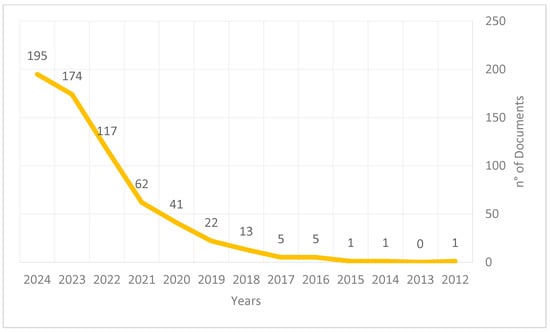
Figure 1
Open AccessArticle
Adsorption-Desorption of Selenium on Different Nanoscale Waste Materials in Contaminated Water
by
Ahmed M. Mahdy, Nieven O. Fathi and Zhi-Qing Lin
Environments 2025, 12(11), 440; https://doi.org/10.3390/environments12110440 - 16 Nov 2025
Abstract
►▼
Show Figures
Different sources of nanomaterials on the adsorption of selenium (Se) in aqueous solutions were evaluated, including nanoscale municipal drinking water treatment residues (nWTRs) and agricultural waste pomegranate peels (PNPs), in comparison with commercial carbon nanoparticles (CNPs). Different Se(IV) treatments and application doses of
[...] Read more.
Different sources of nanomaterials on the adsorption of selenium (Se) in aqueous solutions were evaluated, including nanoscale municipal drinking water treatment residues (nWTRs) and agricultural waste pomegranate peels (PNPs), in comparison with commercial carbon nanoparticles (CNPs). Different Se(IV) treatments and application doses of each nanomaterial were evaluated. The Se adsorption kinetics were determined at different time intervals. The results showed that the Se sorption capacity of different nanomaterials and their mixtures varied significantly (p < 0.05). Se concentration, the application dosage of nanoparticles, and the interaction time of Se and nanoparticles in Se solutions significantly affect the efficiency of Se adsorption at pH 3.51. The sorption isotherm of Se varied amongst different nanomaterials. Se adsorption on CNPs, nWTRs-CNPs, nWTRs, PNPs-CNPs, nWTRs-PNPs, and PNPs at the 800 mg Se/L treatment was 79.93, 77.48, 76.00, 72.97, 70.49, and 68.16 mg Se/g sorbent, respectively. The H-type isotherm became dominant, indicating intensive interaction between Se and nanoparticles. With the Se treatment of 50 mg/L, the Se removal efficiency of CNPs, nWTRs-CNPs, nWTRs, PNPs-CNPs, nWTRs-PNPs, and PNPs was 100, 96, 93, 87, 85, and 80%, respectively, but became 100, 97, 95, 91, 88, and 85%, respectively, at a higher Se concentration of 800 mg/L. Increasing the application dosage of nanomaterials resulted in a significant increase in Se mass sorbed by the nanoparticles. Se adsorption was best predicted by the Langmuir isotherm model. The desorption rate of the Se mass sorbed by nanoparticles at 800 mg Se/L was 0.4% of the total Se adsorbed by CNPs, with 0.88% by nWTRs-CNPs and 1.69% by PNPs-CNPs, while higher Se desorption rates of 4.2, 7.3, and 17.6% were observed with nWTRs, nWTRs-PNPs, and PNPs, respectively. This study demonstrates that nanoscale municipal and agricultural solid waste materials can be effective in removing Se from contaminated water.
Full article

Graphical abstract
Open AccessArticle
Isotopic Evidence from the Po River Under Prolonged Drought Conditions (Northern Italy, 2022–2023)
by
Gianluca Bianchini, Valentina Brombin, Chiara Marchina and Claudio Natali
Environments 2025, 12(11), 439; https://doi.org/10.3390/environments12110439 - 16 Nov 2025
Abstract
The Po River, the largest watercourse in northern Italy, represents a fundamental resource for the socio-economic system of the Padanian Plain. Between February 2022 and February 2023, the basin was affected by exceptional climatic anomalies, with unprecedented high temperatures, marked precipitation deficits, and
[...] Read more.
The Po River, the largest watercourse in northern Italy, represents a fundamental resource for the socio-economic system of the Padanian Plain. Between February 2022 and February 2023, the basin was affected by exceptional climatic anomalies, with unprecedented high temperatures, marked precipitation deficits, and the most severe hydrological drought documented in the instrumental record. Po river waters sampled during this period showed variable increases (Na+, K+, Mg2+, HCO3−, Cl−, SO42−) or decreases (Ca2+, NO3−) in the geochemical composition of major ions compared to data from previous decades collected under various climatic and hydrological conditions In contrast, the water stable isotope composition (δ2H and δ18O) of the period 2022–2023 displayed distinct and peculiar signatures, ranging from −64.1 to −53.5‰ for δ2H and from −9.4 to −5.7‰ for δ18O, compared to historical averages for 1998–2014 (−71.3 to −58.0‰ and −10.0 to −8.7‰, respectively). These values indicate a strong enrichment in heavy isotopes, reflecting warmer and drier climatic conditions, comparable only to those observed during the severe drought of 2015. Two groups of data were identified: Group 1, showing affinities with Eastern Mediterranean precipitation, and Group 2, characterized by pronounced evaporative isotopic enrichment due to prolonged drought, as evidenced by strongly negative d-excess and LC-excess values, consistent with those from arid and semi-arid regions worldwide. This study demonstrates how climate change and increasing hydrological stress are altering the isotopic composition of one of Europe’s most important river systems. Stable isotopes provide a sensitive tool for tracing moisture sources, quantifying evaporative processes, and assessing drought impacts, confirming their role as Essential Climate Variables (ECVs) in climate and water-resource studies.
Full article
(This article belongs to the Topic Past, Current and Future Processes in the Earth Critical Zone)
►▼
Show Figures

Figure 1
Open AccessArticle
Coevolving Citizen Science, Bats, and Urban Planning to Support More-Than-Human Healthy Cities: Lessons from Florida
by
Nicole Sarver, Glen Cousquer and Peter Lurz
Environments 2025, 12(11), 438; https://doi.org/10.3390/environments12110438 - 13 Nov 2025
Abstract
Urbanisation has resulted in habitat degradation and destruction for native bat species in Florida, USA, posing a continuing threat to bat populations and ecosystem health. Citizen science has been documented to fill population data gaps and outline bat responses to urbanisation, but an
[...] Read more.
Urbanisation has resulted in habitat degradation and destruction for native bat species in Florida, USA, posing a continuing threat to bat populations and ecosystem health. Citizen science has been documented to fill population data gaps and outline bat responses to urbanisation, but an understanding of how this influences societal perceptions of bats and can shape and evolve urban planning initiatives are under-researched and poorly understood. This paper explores how citizen science could contribute to urban planning for bat conservation. A literature review of citizen science projects and native species’ responses to urbanisation mapped the current situation and was supplemented by an analysis of semi-structured interviews with three key informants in the field of bat conservation. Only four of Florida’s thirteen species were featured in the citizen science projects reported in the literature. There was a clear lack of attention to the impact of urbanisation on these species, demonstrating a need for reimagining how data collection and public participation can be improved. An analysis of interviews identified themes of evolving individual perspectives and complex societal connections whose interdependence and coevolution influences the success of both citizen science and urban planning. Understanding this coevolution of society and bat conservation alongside our current knowledge could provide future opportunities for bat-friendly urban planning in Florida with the potential for this to be framed in terms of healthy more-than-human cities.
Full article
(This article belongs to the Special Issue Environmental Challenges and Sustainable Contributions to the One Health Approach)
►▼
Show Figures
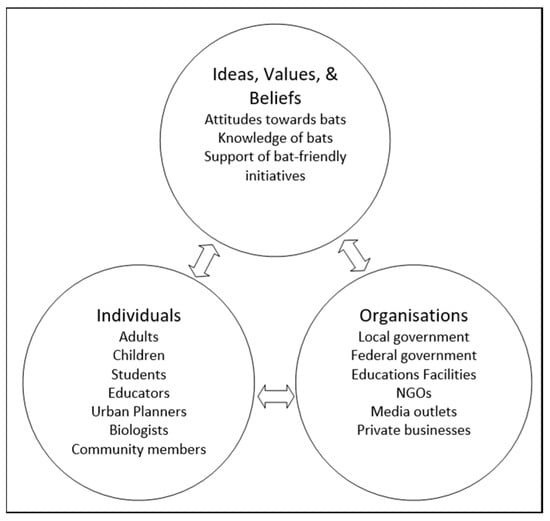
Figure 1
Open AccessReview
Current Knowledge of Carnauba Plant (Copernicia prunifera): Current Stage, Trends, and Future Perspectives
by
Elane Bezerra da Silva, Vanessa Nessner Kavamura, Francisco Matheus Medeiros de Freitas, Adijailton José de Souza and Arthur Prudêncio de Araujo Pereira
Environments 2025, 12(11), 437; https://doi.org/10.3390/environments12110437 - 13 Nov 2025
Abstract
►▼
Show Figures
Carnauba (Copernicia spp.) is a palm tree native to the Brazilian semi-arid region, valued for its significant economic, social, and environmental importance. This resilient species possesses adaptive mechanisms that enable it to endure prolonged periods of soil water scarcity and conditions of
[...] Read more.
Carnauba (Copernicia spp.) is a palm tree native to the Brazilian semi-arid region, valued for its significant economic, social, and environmental importance. This resilient species possesses adaptive mechanisms that enable it to endure prolonged periods of soil water scarcity and conditions of flooding and salinity. However, despite its relevance, there is a notable lack of scientometric data on this species in the literature, representing a significant research gap. This study aimed to analyze the state of research on carnauba palm from 2007 to 2022. Datasets were collected from the Web of Science central database, totaling 658 publications related to the terms “carnauba” or “copernicia”. The bibliometric software VOSviewer was used to create visual maps of keyword co-occurrence networks, providing deeper insights into the progress and research trends on the topic. Since 2014, the number of publications on carnauba has steadily increased, peaking between 2019 and 2021. The most prominent focus in these articles is on carnauba wax, with extensive research on its properties and applications in the food production chain. This significance is also reflected in the keyword co-occurrence networks. However, studies combining carnauba with soil sciences remain underexplored. Given carnauba’s importance in environmental and soil conservation, future research linking these areas could become a key avenue for advancing knowledge on the subject.
Full article

Figure 1
Open AccessReview
Mapping Agricultural Sustainability Through Life Cycle Assessment: A Narrative Review
by
Konstantinos Spanos, Nikolaos Kladovasilakis, Charisios Achillas and Dimitrios Aidonis
Environments 2025, 12(11), 436; https://doi.org/10.3390/environments12110436 - 12 Nov 2025
Abstract
Over the past few decades, the concept of sustainable agriculture has gained popularity. However, the notion of sustainable agriculture is highly imprecise and unclear, making its application and execution exceedingly challenging. Moreover, disagreements about what sustainability means can lead to a deeper understanding
[...] Read more.
Over the past few decades, the concept of sustainable agriculture has gained popularity. However, the notion of sustainable agriculture is highly imprecise and unclear, making its application and execution exceedingly challenging. Moreover, disagreements about what sustainability means can lead to a deeper understanding of the intricate empirical procedures and possibly debatable principles involved in any effort to achieve sustainability in agriculture. Practices to increase crop resilience, lower chemical inputs, and boost efficiency are examples of future developments. This review identifies how agricultural life cycle assessment (LCA) studies engage with climate-related metrics such as GHG emissions and land use changes, offering insights for adaptation and mitigation strategies. This review also addresses the need to synthesize existing research on how agriculture and food systems can become more environmentally friendly through LCA. LCA enables the identification of environmental hotspots within agricultural systems, therefore, guiding efforts to limit resource consumption and emissions. For this purpose, a search of a bibliographic database was carried out and the results obtained were analyzed with the open-source tool bibliometrix. There were 2328 results in total with publication years from 1993 to 2025, the latter of which refers to a pre-publication. Then, a post-processing analysis of 1411 articles was conducted and a narrative review of around 100 publications was carried out, where agricultural practices with LCA, current trends, and research gaps were explored. Finally, this paper contributes by identifying three major research gaps derived from the literature synthesis: firstly, the underrepresentation of dynamic LCA models in agriculture; secondly, the lack of geographical balance in case studies; and thirdly, the insufficient integration of socio-economic dimensions in environmental assessments.
Full article
(This article belongs to the Special Issue Circular Economy in Waste Management: Challenges and Opportunities)
►▼
Show Figures

Figure 1
Open AccessArticle
Noise Pollution from Diesel Generator Use During the 2024–2025 Electricity Crisis in Ecuador
by
David del Pozo, Bryan Valle, Silvio Aguilar, Natalia Donoso and Ángel Benítez
Environments 2025, 12(11), 435; https://doi.org/10.3390/environments12110435 - 12 Nov 2025
Abstract
Hydropower is the primary source of electricity in several countries in Latin America. Hydropower provides approximately 80% of Ecuador’s electricity; however, it remains highly vulnerable to climate change, resulting in uncertainties in power generation due to altered precipitation patterns, runoff, and systematic failures.
[...] Read more.
Hydropower is the primary source of electricity in several countries in Latin America. Hydropower provides approximately 80% of Ecuador’s electricity; however, it remains highly vulnerable to climate change, resulting in uncertainties in power generation due to altered precipitation patterns, runoff, and systematic failures. Consequently, Ecuadorians are becoming increasingly reliant on diesel generators during crises, resulting in public health, safety, and economic impacts, as well as social and political disruptions. This study evaluated noise pollution in the central urban area of the city of Loja for the first time during the 2024–2025 electricity crisis in Ecuador. A Type 1 integrating sound-level meter was used to monitor noise pollution (LAeq, 10min) at 20 locations during periods of generator operation and non-operation. At each location, the number of generators, the density of commercial activities along the streets, as well as traffic and other urban characteristics, were recorded. Results revealed that the presence of generators, street width, and the number of generators significantly increased the LAeq, 10min, often exceeding the limits set by the World Health Organization and Ecuador’s environmental regulations. Frequency spectrum analysis revealed that medium frequencies increased with A-weighting, while low frequencies rose with C-weighting, suggesting potential health risks to the local population. The thematic noise map during generator inactivity showed lower noise levels, averaging around 71.5 dBA. Conversely, when the generators were operational, noise levels exceeded 79.6 dBA, indicating a significant increase in environmental noise exposure associated with their use. This highlights an urgent need to implement and expand renewable energy sources, as existing options like wind power, photovoltaic energy, and biomass are insufficient to meet community demands.
Full article
(This article belongs to the Special Issue Interdisciplinary Noise Research)
►▼
Show Figures

Figure 1
Open AccessReview
Microfluidic Field-Deployable Systems for Colorimetric-Based Monitoring of Nitrogen Species in Environmental Waterbodies: Past, Present, and Future
by
Jelena Milinovic, James Lunn, Sherif Attia and Gregory Slavik
Environments 2025, 12(11), 434; https://doi.org/10.3390/environments12110434 - 12 Nov 2025
Abstract
The biogeochemical cycling of nitrogen (N) in natural waterbodies, ranging from freshwaters to estuaries and seawater, is fundamental to the health of aquatic ecosystems. Anthropogenic pressures (agricultural runoff, atmospheric deposition, and wastewater discharge) have profound effects on these cycles, leading to widespread problems,
[...] Read more.
The biogeochemical cycling of nitrogen (N) in natural waterbodies, ranging from freshwaters to estuaries and seawater, is fundamental to the health of aquatic ecosystems. Anthropogenic pressures (agricultural runoff, atmospheric deposition, and wastewater discharge) have profound effects on these cycles, leading to widespread problems, such as eutrophication, harmful algal blooms, and contamination of drinking water sources. Monitoring of different N-species—ammonium (NH4+), nitrite (NO2−), nitrate (NO3−) ions, dissolved organic nitrogen (DON), and total nitrogen (TN)—is of crucial importance to protect and mitigate environmental harm. Traditional analytical methodologies, while providing accurate laboratory data, are hampered by logistical complexity, high cost, and the inability to capture transient environmental events in near-real time. In response to this demand, miniaturised microfluidic technologies offer the opportunity for rapid, on-site measurements with significantly reduced reagent/sample consumption and the development of portable sensors. Here, we review and critically evaluate the principles, state-of-the-art applications, inherent advantages, and ongoing challenges associated with the use of microfluidic colorimetry for N-species in a variety of environmental waterbodies. We explore adaptations of classical colorimetric chemistry to microfluidic-based formats, examine strategies to mitigate complex matrix interferences, and consider future trajectories with autonomous platforms and smart sensor networks for simultaneous multiplexed N-species determination.
Full article
(This article belongs to the Special Issue Monitoring of Contaminated Water and Soil)
►▼
Show Figures
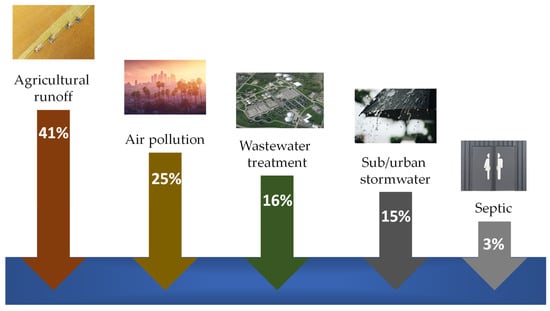
Figure 1
Open AccessArticle
Shore Protection Structures as Contributors to Drowning Risk in Italy
by
Dario Giorgio Pezzini and Enzo Pranzini
Environments 2025, 12(11), 433; https://doi.org/10.3390/environments12110433 - 11 Nov 2025
Abstract
Approximately 27.6% of Italian beaches are currently affected by erosion, despite the widespread implementation of coastal defence structures. Around 10,500 installations—mainly groins and detached breakwaters—occupy nearly 24.6% of the national shoreline. Although primarily designed to protect tourist beaches, these hard-engineered structures often degrade
[...] Read more.
Approximately 27.6% of Italian beaches are currently affected by erosion, despite the widespread implementation of coastal defence structures. Around 10,500 installations—mainly groins and detached breakwaters—occupy nearly 24.6% of the national shoreline. Although primarily designed to protect tourist beaches, these hard-engineered structures often degrade coastal landscapes, alter nearshore circulation, and pose risks to swimmers. Nevertheless, beaches remain a fundamental asset for the “3S” (Sun, Sea, Sand) tourism sector, which contributes approximately 2.2% to Italy’s GDP, accounting for over 175 million tourists’ overnight stays in 2024, frequently concentrated near protected coastal zones. In this study, drowning incidents along the Italian coastline were analyzed using press reports complemented by official statistics. Between 2016 and 2021, an average of 145 fatalities occurred per bathing season. Sudden drownings following medical emergencies accounted for 41% of cases, non-swimmers for 18%, accidental falls into the water for 3%, and water sports activities for an additional 3%. Rip currents on natural beaches were responsible for 22% of drownings, whereas those generated by coastal defence structures accounted for 12%. A further 12% of non-swimmer fatalities are suspected to have resulted from falls into depressions or channels formed in proximity to these structures. Evidence from previous studies and seabed morphology analyses indicates that coastal defence structures can generate rip currents through two main mechanisms: (1) hydraulic pressure exerted against groins, which drives offshore flow, and (2) water outflow between pairs of breakwaters resulting from wave setup behind them. Both processes, though often less intense, are also observed near submerged structures. The erosional channels formed by these currents may persist well beyond storm events, maintaining dangerous conditions for bathers. As Italy continues to rely predominantly on hard coastal protection measures, improving the understanding of drowning dynamics associated with these structures is crucial. This should be accompanied by regulatory updates requiring designers and coastal managers to systematically assess related hazards and to propose effective mitigation and safety strategies.
Full article
(This article belongs to the Special Issue Environmental Risk Assessment of Aquatic Environments)
►▼
Show Figures

Figure 1
Open AccessArticle
Long-Term Monitoring of Arundo donax L. Range in Albufera Wetland (Spain): Management Challenges and Policy Implications
by
Juan Víctor Molner, Noelia Campillo-Tamarit, Miguel Jover-Cerdá and Juan M. Soria
Environments 2025, 12(11), 432; https://doi.org/10.3390/environments12110432 - 11 Nov 2025
Abstract
Arundo donax L. (common reed), a highly invasive species in Mediterranean wetlands such as the Albufera Natural Park, poses significant ecological and management challenges. Using Landsat-5 and Sentinel-2 NDVI data, this study quantified changes in its coverage between 1996 and 2024. The results
[...] Read more.
Arundo donax L. (common reed), a highly invasive species in Mediterranean wetlands such as the Albufera Natural Park, poses significant ecological and management challenges. Using Landsat-5 and Sentinel-2 NDVI data, this study quantified changes in its coverage between 1996 and 2024. The results reveal a significant expansion, showing a decreasing trend (91.4 ha in 1996 to 62.5 ha in 2011; −31.6%) followed by a clear rebound (83.5 ha in 2024; +33.6%), especially in the southern shrublands of the lagoon. A Mann–Kendall analysis confirmed a significant decreasing trend during 1996–2011 and an increasing trend during 2011–2024 (p < 0.05). The results indicate that previous control efforts reduced A. donax cover but that the species has recolonised after 2011, likely due to discontinuous management. These dynamics emphasise that long-term monitoring is required. Management strategies must focus on targeting the rhizome and implementing long-term monitoring programmes spanning three to five years. The utilisation of remote sensing methodologies proved effective in the monitoring of coverage, thereby facilitating the development of remediation strategies. It is imperative that actions accord primacy to critical areas such as the south and canals, complemented by native restoration and enhanced inter-administrative coordination, with the communication of benefits such as flood risk reduction. A balanced approach is required that considers ecological objectives, risks, and socio-political aspects.
Full article
(This article belongs to the Special Issue Urban Water Ecology: Aquatic Biodiversity, Habitat Restoration and Conservation)
►▼
Show Figures

Figure 1
Open AccessArticle
Microbial Inoculants and Sugarcane Residues Promote Mucuna pruriens Development in Tebuthiuron-Affected Soil: Biological Amendments Support Plant Growth in Polluted Substrate
by
Victor Hugo Cruz, Dhônata Marcos Perfeito, Thaís Lopes de Oliveira, Yanca Araujo Frias, Thalia Silva Valério, Vagner do Nascimento, João Pedro Maia and Paulo Renato Matos Lopes
Environments 2025, 12(11), 431; https://doi.org/10.3390/environments12110431 - 11 Nov 2025
Abstract
►▼
Show Figures
This study evaluated the individual and combined effects of different bio-inputs—traditional filter cake, filter cake composted with ash, and a microbial inoculant—on the growth and physiological performance of Mucuna pruriens cultivated in soil contaminated with the herbicide tebuthiuron. The experiment followed a completely
[...] Read more.
This study evaluated the individual and combined effects of different bio-inputs—traditional filter cake, filter cake composted with ash, and a microbial inoculant—on the growth and physiological performance of Mucuna pruriens cultivated in soil contaminated with the herbicide tebuthiuron. The experiment followed a completely randomized design with twelve treatments and five evaluation periods (7, 21, 35, 49, and 70 days after sowing). Morphophysiological variables such as plant height, root length, dry biomass, and chlorophyll content were assessed. The results showed that the addition of traditional filter cake promoted significant growth in tebuthiuron-contaminated soil, while, in uncontaminated conditions, both organic residues and the microbial inoculant enhanced plant development, particularly at later stages. Initial phytotoxicity was observed in treatments with organic residues (up to 67% of samples before 35 days), but these effects decreased over time. The microbial inoculant performed better in the absence of organic amendments, suggesting possible antagonistic interactions. Tebuthiuron reduced chlorophyll content by inhibiting photosystem II, but this effect was mitigated by the addition of filter cake. Overall, the findings highlight the potential of integrating Mucuna pruriens cultivation with organic residues and microbial inoculants as an effective phytomanagement strategy for tebuthiuron-affected soils. This approach provides a sustainable model for improving soil health, supporting legume-based rehabilitation, and advancing biological alternatives to conventional remediation practices.
Full article

Figure 1

Journal Menu
► ▼ Journal Menu-
- Environments Home
- Aims & Scope
- Editorial Board
- Topical Advisory Panel
- Instructions for Authors
- Special Issues
- Topics
- Topical Collections
- Article Processing Charge
- Indexing & Archiving
- Editor’s Choice Articles
- Most Cited & Viewed
- Journal Statistics
- Journal History
- Journal Awards
- Conferences
- Editorial Office
Journal Browser
► ▼ Journal BrowserHighly Accessed Articles
Latest Books
E-Mail Alert
News
Topics
Topic in
Entropy, Environments, Land, Remote Sensing
Bioterraformation: Emergent Function from Systemic Eco-Engineering
Topic Editors: Matteo Convertino, Jie LiDeadline: 30 November 2025
Topic in
Applied Microbiology, Bioengineering, Biology, Environments, Microorganisms
Environmental Bioengineering and Geomicrobiology
Topic Editors: Xian-Chun Zeng, Deng LiuDeadline: 20 December 2025
Topic in
Agriculture, Agronomy, Environments, IJMS, Nitrogen, Plants
Ammonium Biology: From Molecular Response to Fertilization
Topic Editors: Dongwei Di, Soichi Kojima, Byoung Ryong Jeong, Monika SkowrońskaDeadline: 31 December 2025
Topic in
Gels, Polymers, Nanomaterials, Pharmaceutics, Environments, J. Compos. Sci.
Polymer and Biopolymer Nanocomposites for Emerging Medical, Industrial, and Environmental Applications
Topic Editors: Madhappan Santhamoorthy, Seongcheol KimDeadline: 28 February 2026

Conferences
Special Issues
Special Issue in
Environments
IV 1H-TOXRUN International Congress 2025—Empowering Future Generations: The Synergy of Science, Education and Society
Guest Editors: Joana Prata, Ana R. Freitas, Cláudia Maria Rosa Ribeiro, Sara Ricardo, Inês Caldas, Ricardo Dinis-Oliveira, Áurea Madureira-CarvalhoDeadline: 15 December 2025
Special Issue in
Environments
Coping with Climate Change: Fate of Nutrients and Pollutants in Soil
Guest Editors: Ming Zhang, Shuang Wang, Yao ZhaoDeadline: 15 December 2025
Special Issue in
Environments
Balancing Energy and Environmental Sustainability: Innovations, Impacts, and Pathways
Guest Editors: Tamíris Da Costa, Nick Holden, Daniele Costa, Mateus Guimarães da SilvaDeadline: 15 December 2025
Special Issue in
Environments
Advanced Catalytic Processes and Nanomaterials for Environmental Remediation
Guest Editors: Pedro Arce, Pierantonio de LucaDeadline: 15 December 2025
Topical Collections
Topical Collection in
Environments
Trends and Innovations in Environmental Impact Assessment
Collection Editor: Manuel Duarte Pinheiro






